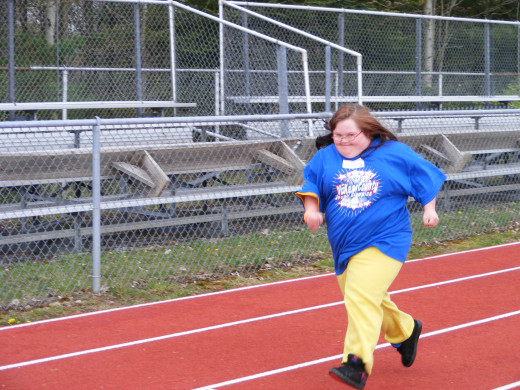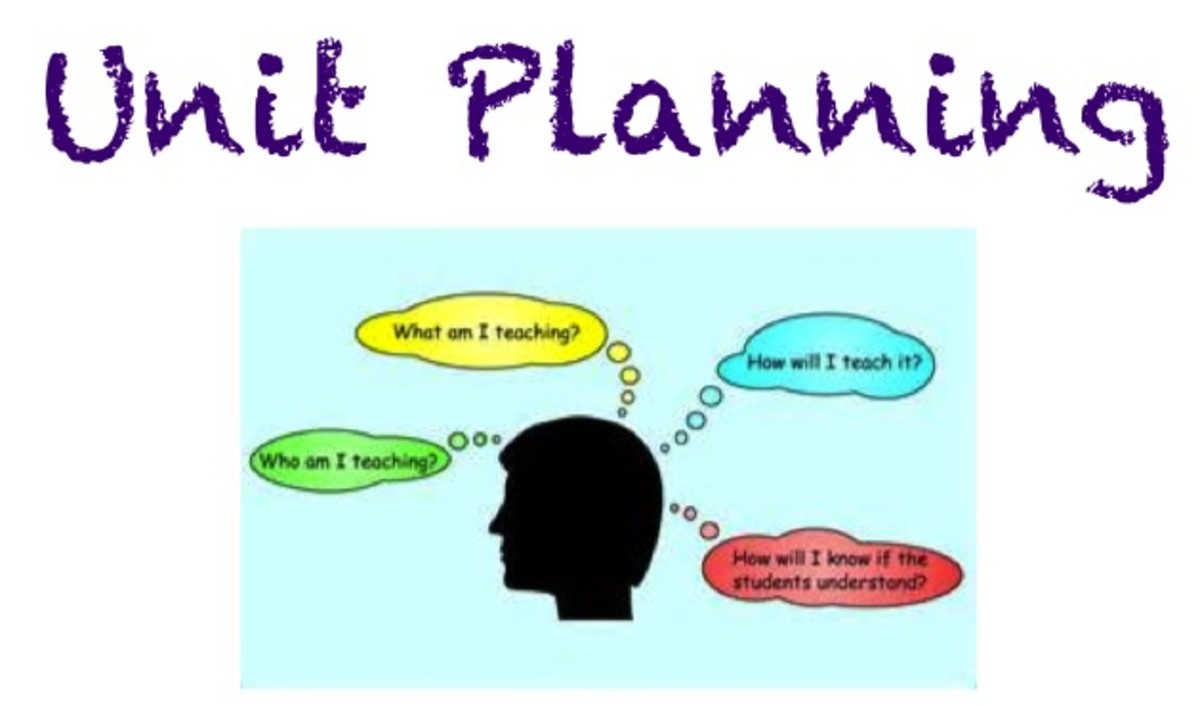Physical movement in classrooms

Fitness
Movement in the Classroom
Run to Class
by Eric J. Specht
There is national concern regarding the performances of United States school systems and children as a direct result from national budget cuts and educational laws. Budget cuts curbs school expenditures and the No Child Left Behind Act demands higher test scores. Although responses for school systems and children to deal with the challenges originate, the answers appear to be more damaging because the value of measuring performance is according to traditional principles that prioritize learning quantity. Answers to balance the new educational mandates are simply to remove non-academic classes from the curriculum and revert to old principles that strategize drilling common knowledge and facts into memory. It appears ideal to remove physical education, recess, performing arts, and other physical activities from school curriculums because it would allow more time instill an abundance of information. However, Brain-Based Learning research claims that traditional learning principles are monotonous and rigorous, especially today because the expectations of the No Child Left Behind Act requires students to be stellar. Furthermore, Brain-Based Learning research proves that physical movement benefits students on a multiple scale with learning developments. As a result, school and student performances appear to be failing around the nation because new curriculum challenges dismiss an essential aspect of Brain-Based Learning, physical movement.
Part I: Learning Connections
The Theory of Brain-Base Learning is to fulfill the brains normal learning processes in order to attain knowledge. The sum of the theory is the attribute of three words, engagement, strategies, and principles or ESP. Brain-Base Learning is the engagement of strategies based on principles that derive from understanding the brain, which develop meaningful and memorable learning experiences. One major aspect of Brain-Base Leaning is physical movement because everything humans do involves the brain, which challenges the philosophy established centuries ago that the mind and body are separate entities. Neuroscientists claim the mind and body deeply interconnect because the brains natural learning process develops connections through experiences (Jensen, 2008, p. 4). Therefore, traditional schoolroom principles are insufficient learning strategies for the way the brain connects with understanding and attaining new information. The most common classroom approach is one teacher standing in front of thirty seated children attempting to get each student to attain the same knowledge at the same time. The approach has the advantage of being relatively effective, but the teaching technique mostly focuses on students remembering and reciting facts or merely learning quantities rather than learning qualities. Physical movement is a principle of Brain-Base Learning that naturally assists maximizing student performances.
In order to understand that physical movement contributes to meaningful and memorable brain developments, it is first essential to know the fundamental functions of the brain. Once, the belief was that the brains learning connections grew stagnate at a certain developmental stage. However, new research indicates that brain plasticity occurs or the brain throughout life will continue to change and reorganize in response to new information and neuron successors ("Information about the Brain ", 2005). The brain consists of hundreds of millions of neurons, which receives and sends information. Movement of chemicals accomplishes the communication of information between neurons across small gaps called the synapse. Neurotransmitters are chemicals the neurons release to cross the synapse where the next neuron awaits the information. The more synapse that are crossed or the more connections neurons establish with another neuron results in quality knowledge attainment, but stimulating neurons to release chemicals can be challenging in traditional learning settings. However, physical movement enhances learning development because it produces chemicals that assist neuron connections and brain plasticity (Jensen, 2008, pp. 10, 38), so accompanying traditional classroom procedures with physical movement appear to be a strategy of principle.
Scientific research proves physical activities positively influences the brain to perform at its best. Exercise increases blood circulation, which provides individual brain neurons with more oxygen and nutrients to improve the synapse process. Exercise also promotes brain cell reproduction, stimulates nerve growth hormones that enhances brain function, produces mood-enhancing neurotransmitters, and nurtures brain plasticity. Such understanding of the brain encourages neuroscientists and cognitive theorists to believe the aspect of physical movement in Brain-Base Learning Theory alone can assist the performance of both educational systems and students. Cognition is the mental faculty or process of acquiring knowledge and more importantly, the area educational systems assess student’s intelligences. However, learning is an individual process and the quality of attaining information depends on neuron transmission roused by academic philosophies. Yet, traditional principles limit the quality of education because classroom strategies are rigorous due to monotonous approaches and as a result, effect the necessary neuron connections individuals require to receive a meaningful and memorable learning experience.
Physical activities in educational structures, such as physical education, recess, fieldtrips, hands on experiments, and many others assist students to achieve learning connections that promote quality learning. First, physical activities are important because they can reduce stress. Stress occurs when threatened by physical or emotional danger and as a result, perceptions compromise goals. Under any type of perceived threats, the brain loses ability to interpret subtle environmental clues, loses ability to index, store, and access information, loses higher-order thinking, and loses some long term and short-term memory capacity, and many other negative effects. In an educational environment, the symptoms of stress can be very detrimental in obtaining quality learning. However, physical movement relieves stress and triggers the release of dopamine, a chemical that enhances mood and fuels eustress. Eustress or good stress can occur as a response to mood improvement and release chemicals like cortisol, adrenaline, and norepinephrine to heighten perceptions and increase motivation (Jensen, 2008, pp. 38, 39, 42), which can enrich traditional learning endeavors to be meaningful and memorable.
Not only can physical movement overcome adversities and stress, but it also boosts cognition and memory. Physical movement releases adrenaline and noradrenaline responses or chemicals that enable the mind and body to manage challenges. Neuroscientists also discover that exercise releases a natural protein substance known as BDNF or brain-derived neurotrophic factor, which is essential for memory processing and enhances cognition because it improves and increases the exchange of information between neurons (Berchtold, 2002). Elevated brain-derived neurotrophic factor induce by exercise may also accelerate the development of long-term potentiation or long-term memory connections. Additionally, dopamine, which reduces stress by improving mood, also aids the memory process. Exercise also releases norepinephrine, a hormone that enables the ability to remember information. The benefit of exercise manages composure, improves memory, increases cognitive skills, promotes brain plasticity, and enhances performance overall.
Part II: Physical Movement Interferences
Although evidence claims physical movement is a major contributor towards attaining maximum brain performance, educational systems continue to remove physical activities from the school curriculum. National budget cuts force school districts to make necessary curricular cuts and as a result, those that appear less academic: physical education, sports, recess, fieldtrips, performing arts, and others vanish from the curriculum. Physical education was once a routine for all children in school structures, but has steadily scaled back over the years. The number of United States high school students attending daily physical education classes dropped from forty-two percent to twenty-nine percent just during the past decade. According to the National Association for Sport and Physical Education , nearly half of all elementary and junior high school students as well as seventy-five percent of high school students do not attend any physical education classes (Villaire, 2012). Recess is also in jeopardy of receiving an elimination kick as an estimated forty percent of United States school districts either have eliminated recess or are considering the act claims the president of the American Association of the Child's Right to Play , Rhonda Clements. Rhonda Clements argues, ["Physical education is an academic subject…and disposing of recess is a deeply misguided approach to education”] (2012). School districts nationally dismiss physical activities in attempt to achieve standard to stellar performance, but school systems that participate with dismissing physical activities may be failing because evidence proves exercise enhances academic performance.
Aside from eliminating physical education and the instructor from school structures, national budget cuts effects other faculty members. Educational staff members such as security guards, guidance counselors, and administrators also experience employment termination in order for school districts to maintain with in school budget. However, such staff members provide a secure and stress free environment. Security guards offer a peace of mind, guidance counselors serve up multiple escape routes for students concerns, and administrators oversee that the environment sustains discipline. Although school districts may be able to manage all the tasks attained from relieving staff members, terminating the employment of young teachers is irreplaceable. Young teachers are motivated and create a learning environment that is compelling because they facilitate new teaching strategies based on new principles of understanding the brain (Watts, 2010). However, innovative ideas that implement the physical movement principle of brain-based learning may be the most effective means to overcome academic failure due to budget adversities.
The No Child Left Behind Act of 2001 is another factor that affects schools and students performances. The essence of the act is to ensure that all children have the opportunity to receive equal learning qualities, but the act encumbers school districts with misfortunes ("Resolved ", 2010). The No Child Left Behind law raises academic standards and as a result, educators stray from advocating quality learning and focus more towards traditional strategies. Traditional strategies drill quantity learning because assessments that measure school performance are often in relation to student’s performance on tests, which mostly consists of multiple choice and true and false questions. Furthermore, the No Child Left Behind Act holds educators and schools more accountable for student performance than before, so staff is replaceable and school structures may face cessations. As a result, the concerns of school systems are to program students to recall and recite common knowledge and facts, which are often monotonously rigorous strategies based on dated principles. Moreover, the new academic standards influence school districts to develop new curriculums that remove physical education, recess, performing arts, fieldtrips, and many others to fulfill the learning requirements the No Child Left Behind Act mandates (Rothstein, 2009). It appears that schools and students are failing merely because educational regulations and national budget cuts phase out physical academic activities.
Part III: Innovative Physical Interventions
Although budget cuts and regulations hinder the physical aspect of Brain-Base Learning, teachers can stimulate the natural benefits of exercise that enhance learning by informally incorporating physical movements. Educators can sporadically shuffle students seating arrangements during class, permit passing around a beach ball, allow students to stand up, move, and stretch without permission, and incorporate many other strategies that promote the learning benefits of exercise, which also prompts attentiveness and responsiveness in the environment. Teachers can also enhance student mood and assist students with stress management by facilitating informal instructional exercises. Educators can encourage students to partake in breathing exercises, inspire walks around classroom, and motivate running in place, as well as other forms of classroom exercises during the first few minutes of class to release the good chemicals that enhance neuron connections and improve quality learning (Jensen, 2008).
Encouraged by Brain-Base Learning research, educators should innovate ways to implement physical movements according to the program of study. Teachers can formally instruct physical movement with hands on activities. Science studies often include curriculums that welcome physical activities, laboratory work, exploration, science projects, data collection, and many more. History studies can include physical activities that reenact historical events, construct ancient replicas, or engage in modern political debates. Mathematics may be the most difficult study to include physical movement, but innovative ideas may include manipulating shapes, dancing to rhythms that emphasize numbers and patterns, or use of movement to collect data to convert into charts. Language studies also facilitate opportunity to incorporate physical movement. For example, students may play the role of famous literary characters, dance to poetry, or simply perform cross lateral movements to supplement memory with grammar and spelling rules. With a little innovation, teachers can formally incorporate meaningful and memorable learning experiences with physical movement.
However, formal and/or informal physical movement strategies may be difficult to assess and as a result, hinder the importance of the classroom application. To overcome the assessment adversities of physical movement, teachers can simply compare student performances after implementing physical movement strategies with performances prior to the application. Additionally, evaluations of the Brain-Based Learning aspect may also be attainable by comparing learning performance results with schools that considerably support long-established principle approaches. More effectively and importantly is measuring the performance of schools that reserve physical education, recess, performing arts, field trips, and others with schools that sack physical activities as an academic event (Speregen, n/a); however, it appears the assessment is already conclusive as the concern of failing schools and children heightens.
It is enthusiastically clear that physical movement improves student performance, but it is painfully clear that adversities force new standards to maintain traditional teaching and learning values. More discerning is the abundance of failing schools and children as a direct result of curriculum adjustments school systems construct to adhere to budgets and regulations. However, physical movement is a natural learning aspect of Brain-Base Learning that enhances school and student performances. According to neuroscientists, cognitivists, and research the benefit of physical movement manages composure, improves memory, increases cognitive skills, and promotes brain plasticity. However, quality learning can only develop from the engagement of strategies based on modern principles that derive from understanding the brain. Therefore, school systems that are willing to dismiss physical education, recess, performing arts, and other physical activities to attain more time towards instilling quantity learning should than encourage the physical movement application of Brain-Based Learning into classrooms to enhance quantity performance with quality.
References
"Resolved". (2010, August 30). Resolved: That on balance, the No Child Left Behind Act of 2001 has improved academic achievement in the United States . Retrieved Apri 14, 2012, from Debatepedia: http://debatepedia.idebate.org/en/index.php/Resolved:_That_on_balance,_the_No_Child_Left_Behind_Act_of_2001_has_improved_academic_achievement_in_the_United_States
Berchtold, C. W. (2002, June n/a). Exercise: a behavioral Intervention to Enhance Brain Health and Plasticity . Retrieved from TRENDS in Neurosciences: http://resulb.ulb.ac.be/facs/ism/docs/behaviorBDNF.pdf.
BSCS. (2005, n/a n/a). "Information about the Brain" . Retrieved April 15, 2012, from Teachers Guide: http://science.education.nih.gov/supplements/nih4/self/guide/info-brain.htm.
Jensen, E. (2008). Brain-Based Learning The New Paradigm of Teaching (Second ed.). Thousand Oaks: Corwin Press.
Rothstein, R. (2009, October 13). The Prospects for No Child Left Behind . Retrieved April 14, 2012, from Economic Policy Institute: http://www.epi.org/publication/pm149/.
Speregen, K. (n/a, n/a n/a). Physical Education in America's Public Schools . Retrieved from University of Michigan: http://sitemaker.umich.edu/356.speregen/physical_education_and_school_performance.
Villaire, T. (2012, n/a n/a). Decline of Physical Activity . Retrieved April 14, 2012, from National PTA: http://www.pta.org/topic_decline_of_physical_activity.asp.
Watts, B. (2010, March 15). Seattle Schools rely on seniority . Retrieved April 13, 2012, from CLP: http://www.clpmag.org/article.php?article=Seattle-Schools,-Reliant-on-Seniority_00168&gclid=CMSj_-OLta8CFeUEQAod70dRjA.






